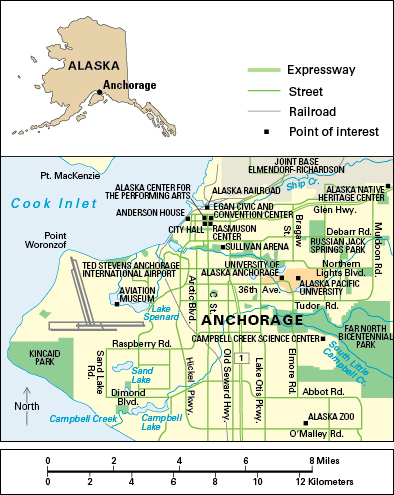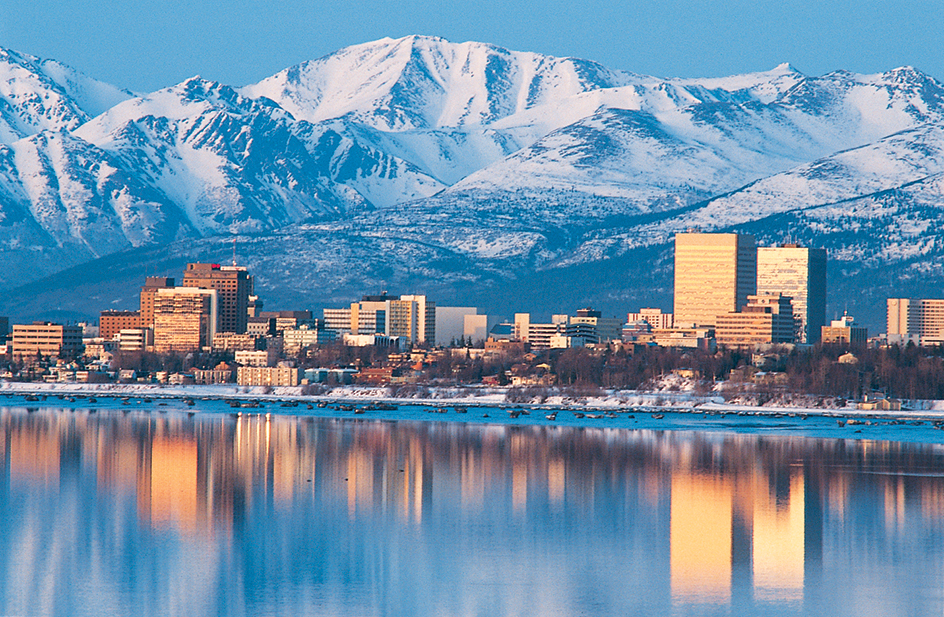Anchorage (pop. 291,247; met. area pop. 398,328) is Alaska’s largest city and the state’s main center of commerce and transportation. Its metropolitan area, which includes the fast-growing Matanuska Valley, is home to about half of the state’s population. It is also a chief United States defense center. The city covers 1,947 square miles (5,042 square kilometers) of land and water on upper Cook Inlet in south-central Alaska, west of the Chugach Mountains.

Anchorage is a modern city with high-rise buildings, hotels, and shopping malls. An extensive system of bicycle and ski trails extends in and around the city. Ted Stevens Anchorage International Airport, one of the busiest in the nation, is a regional transfer hub for air freight bound for Asia. The city is a chief Alaskan port and the headquarters of the Alaska Railroad. Cultural attractions include the municipal Anchorage Museum at Rasmuson Center, the Alaska Native Heritage Center, the Anchorage Symphony Orchestra, and the Anchorage Opera. University of Alaska Anchorage is the largest campus in the state university system. Alaska Pacific University is a small, private school in the city. Joint Base Elmendorf-Richardson, a combined Air Force and Army post, borders Anchorage to the north.

Prior to white settlement, Athabascan Indians inhabited the region, harvesting salmon and moose. In 1914, the U.S. Congress authorized construction of the Alaska Railroad. Engineers selected the mouth of Ship Creek as the railroad staging and construction center and laid out the town. In 1915, the town was formally named Anchorage, because ships anchored there with supplies for the railroad. The city was incorporated in 1920.
The city grew slowly until World War II (1939-1945), when service personnel and civilian employees of the military swelled the population from 2,500 to 70,000. Modest oil finds on the nearby Kenai Peninsula in 1957 aided the town’s development. On March 27, 1964, one of the worst earthquakes in the history of North America hit the Anchorage area, killing 131 people. But the city quickly rebuilt.
In 1975, Anchorage merged with several other communities to form the Municipality of Anchorage. The construction of the Trans-Alaska Pipeline in 1977 provided a strong boost to the economy. The city is an important transfer point for tourists. Anchorage has a mayor-council form of government.
